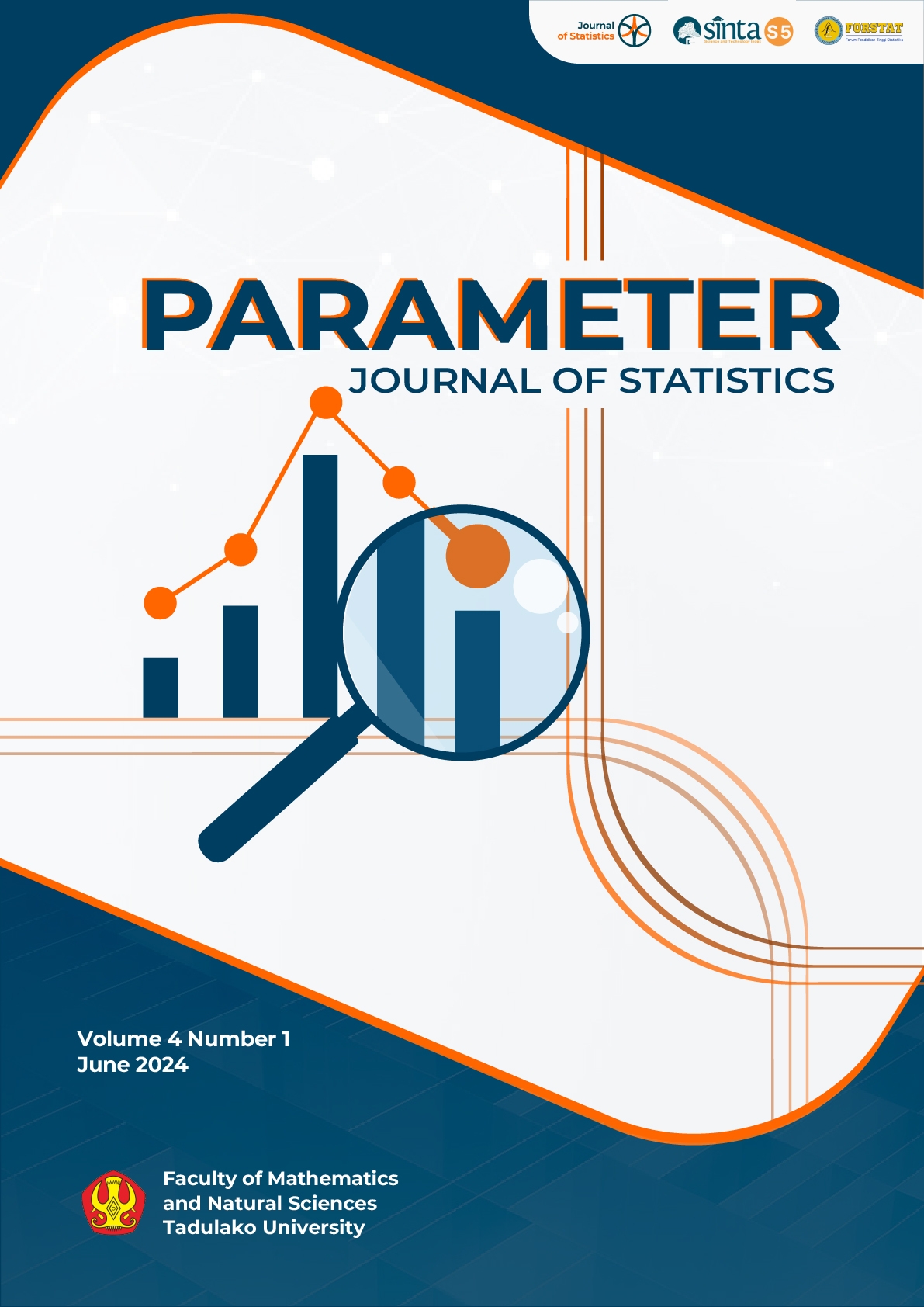Main Article Content
Abstract
The water crisis, or what is hereinafter referred to as drought, has become a systemic and crucial problem in several regions in Indonesia. Indonesia is an agricultural country, where the presence of water is very influential so that drought can become a natural disaster if it starts to cause an area to lose its source of income due to disturbances in agriculture and the ecosystem it causes. Drought forecasting can provide support solutions in preventing the impact of drought. In this paper, we compare the performance of wavelet fuzzy logic and the support vector machine (SVM) as a supervised learning method for drought forecasting in East Nusa Tenggara. This study examines the monthly rainfall data for 1999-2015 which is the basis for calculating the drought index based on the Standardized Precipitation Index (SPI). The SPI value used is SPI-3 at a station in East Nusa Tenggara. The performance of models is compareded on R2. The results showed that R2 of wavelet fuzzy logic is smaller than one of SVMVM is better than the wavelet fuzzy logic for forecasting SPI value of drought in East Nusa Tenggara.
Keywords
Article Details

This work is licensed under a Creative Commons Attribution-ShareAlike 4.0 International License.
References
- [1] Dai A (2013) Increasing drought under global warming in observations and models. Nat Clim Change 3(1):52–58.
- [2] Maca P, Pech P (2015) Forecasting SPEI and SPI drought indices using the integrated artiï¬cial neural networks. Comput Intell Neurosci 17. Article ID 3868519
- [3] Wambua RM, Mutua BM, Raude JM (2016) Prediction of missing hydro-meteorological data series using artiï¬cial neural networks (ANN) for Upper Tana River Basin. Kenya Am J Water Resourc 4(2):35–43
- [4] McKee TB et al (1993) The relationship of drought frequency and duration to time scales. In: Proceedings of 8th conference on applied climatology, California, pp 17–22
- [5] Mishra, A. K., and V. P. Singh, 2010: A review of drought concepts. J. Hydrol., 391 (1–2), 202–216.
- [6] Mishra, A. K., and V. P. Singh, 2011: Drought modeling—Areview. J. Hydrol., 403 (1–2), 157–175, doi:10.1016/j.jhydrol.2011.03.049.
- [7] Cancelliere, A., G. Di Mauro, B. Bonaccorso, and G. Rossi (2005) Stochastic forecasting of Standardized Precipitation Index. Proc. 31st IAHR Congress, Seoul, Korea, IAHR, 3252–3260.
- [8] Mishra, A. K., and V. R. Desai, 2005: Drought forecasting using stochastic models. Stochastic Environ. Res. Risk Assess., 19, 326–339.
- [9] Zhang, Y., Yang, H., Cui, H., and Chen, Q, 2019. Comparison of the Ability of ARIMA, WNN and SVM Models for Drought Forecasting in the Sanjiang Plain, China. Natural Resources Research.
- [10] Mokhtarzad, M., Eskandari, F., Vanjani, N.J., and Arabasadi, A. 2017. Drought forecasting by ANN, ANFIS, and SVM and comparison of the models. Environ Earth Sci, 76:72. DOI 10.1007/s12665-017-7064-0
- [11] Belayneh, A and Adamowski, J. 2012. Standard Precipitation Index Drought Forecasting Using Neural Networks, Wavelet Neural Networks, and Support Vector Regression. Applied Computational Intelligence and Soft Computing, Volume 2012, Article ID 794061 DOI 10.1155/2012/794061
- [12] Percival, D. B., & Walden, A. T. (2000). Wavelet Methods for Time Series Analysis. Cambridge University Press. New York
- [13] Kusumadewi, S., Hartati, S., Harjoko, A., & Wardoyo, R. (2006). Fuzzy Multi-Attribute Decision Making (Fuzzy MADM). Yogyakarta: Graha Ilmu
- [14] Vapnik V 1995 The Nature of Statistical Learning Theory Springer-Verlag, NY
- [15] Gunn Steve 1998 Support Vector Machines for Classification and Regression ISIS Technical Report, Image Speech and Intelligent System Group, Southampton: University of Southampton
- [16] Sain H and Purnami S Wulan (2015) Combine sampling support vector machine for imbalanced data classification In Procedia Computer Science, 72, 59-66
- [17] Elkharrim, Mohamed and Bahi Lahcen (2014) Using statistical downscaling of gcm simulations to assess climate change impacts on drought conditions in the northwest of morocco, Modern Applied Science 9(2)
